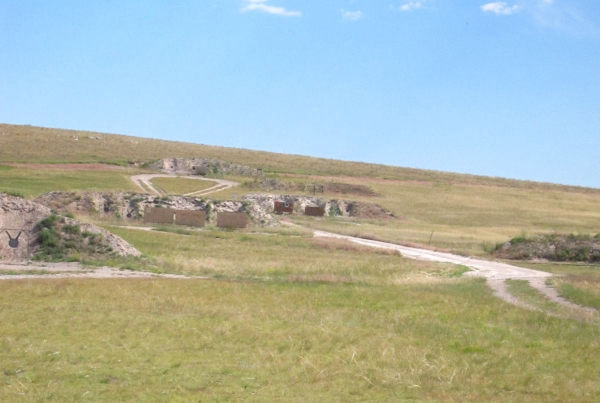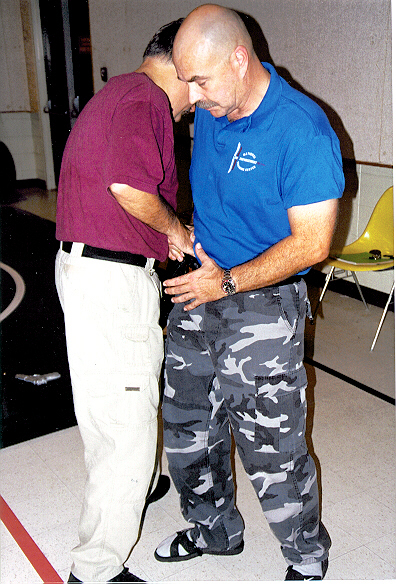I was copied on an email last week asking for information about our agency’s earlier firearms instruction staff. As an outfit that varied from 80 or so sworn to around 130 or so (depending on era, whether we had the jail, etc.) it encompasses a lot of years and they’re trying to document who was there doing that job.

That caused me to consider past instructors I’d known. They each had lessons to teach and I pulled my first trigger in the 1960s. That covers lots of territory. At the risk of the tendency of the elderly – repeating oneself – I elected to highlight a few but to tag each name with a lesson or lessons I learned over the decades.
The first has to be my father. As someone heavily invested in trying to teach a youngster responsibility, the thing that comes to mind is Rule 4, as I’d call it now. He called it “no shooting over the horizon.”

He went further than that, explaining that a skip off hard ground would still allow a bullet to travel a great distance and be dangerous to someone I couldn’t see. He was a hell of a shot with that long 22 rifle he had. Nearsighted, I could barely make out the front sight with glasses on.
The lesson? Responsibility. The person responsible for everything that leaves the muzzle is the person in control of the gun. The cost for failing to remember that can be too high to bear.
A stint in the Army taught me about range discipline. My first attempt at a police qualification – well before I went to the academy (remember, this was ancient times) – was a horrendous failure. I was in an agency that left the choice of sidearm (within limits) to the user. You just have to ‘qualify’ with it.
The gun I’d gotten from a former member of service, a used Colt National Match, choked. Seeing I’d never pass, the instructor pulled me from the line. A bystander, Harry Claflin, was present. At that time, he was proprietor of the Starlight Training Center over in Liberal, Missouri -- and a friend of an officer in our department. He examined the gun, did a “factory adjustment” to one of my magazines and tossed another of them over the berm. He fronted me enough ammo to finish the course and gave me some advice. My memory’s dim, but I think I got a 96% score – that with his guidance and assistance.
Lesson: sort your gear out. Embarrassing on the range, that kind of nonsense can be fatal on the street. I’ve not forgotten that lesson as part of my daily routine to “make ready.”
Finally, at the academy, I got to learn more. Not getting a class until fourteen months after I entered service, I was a bit of a veteran before getting to that hallowed institution. I was told I couldn’t use my speedloaders (revolvers were mandated at Basic classes in those days) and had to load from my pockets. I wouldn’t be doing that on the street, so why?
The answer. “It’s not fair to those who don’t have them.”
Lesson: It’s not a valuable skill to learn if you won’t be using it on the street. An instructor who’ll go unnamed showed me how to stage the loose ammo, how to use the flutes of the cylinder to load without looking (you may have to do this at night or in a dark room). He may have also mentioned something about using the loaders when the ROs were at the other end of the line.
In a fight, take every advantage.
Things changed greatly at the academy over the five years I was gone. I had the chance to return to take an instructor’s school. Attendees were warned not to come unprepared, noting that it’s not a basic shooting school – it’s a teaching school.
I’d gotten into the sad habit of dropping one out of every fifty rounds fired when it counted. As it was still revolver oriented, a lieutenant at the agency I was with offered to help me sort it out. This lieutenant was Harlan Bonner. Using exercises to cure my “preignition push,” he patiently worked to get me ready for the school.

Lesson? I learned about being free with my time and effort to get a student moving to reach the individual’s objectives.
He subsequently returned to Morehouse Parish Sheriff's Department, Bastrop, Louisiana. On June 22, 1984, he was murdered during an arrest by being shot with his own gun.
I learned something from that too. I’d do everything I could to make sure that didn’t happen again. It took a decade to get there, but it was the least I could do.
To be continued ...
— Rich Grassi